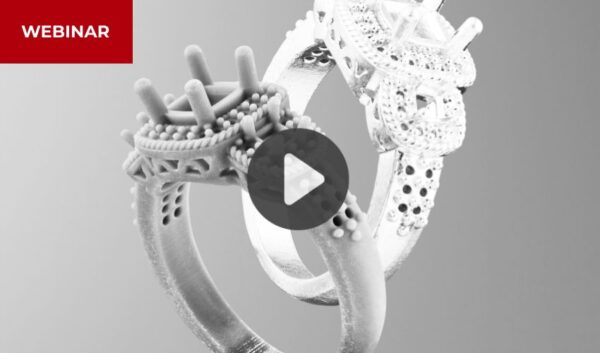The jewelry industry has always been known for its intricate designs and attention to detail. Historically, jewelry production has relied on traditional manufacturing techniques such as casting, forging, and machining. However, these methods often come with limitations, particularly when it comes to creating complex and intricate designs. This is where additive manufacturing, also known as 3D printing, comes into play.
Additive manufacturing is a process of building three-dimensional objects layer by layer using digital 3D models. The process allows for the creation of complex and intricate designs that would be difficult or impossible to produce using traditional manufacturing methods. In the jewelry industry, 3D printing is making it possible to create detailed and personalized jewelry designs at a faster rate and with greater accuracy.
One of the biggest benefits of 3D printing in jewelry design and production is the ability to create complex shapes and intricate designs that would be impossible or extremely difficult to produce using traditional manufacturing techniques. With 3D printing, jewelry designers can create unique, customized pieces that reflect the individuality of the wearer.
Another advantage of 3D printing in jewelry production is the ability to quickly produce prototypes and test designs before committing to full-scale production. This allows for greater flexibility in the design process and helps to reduce waste and costs associated with producing multiple iterations of a design.
In addition to its design benefits, 3D printing is also more environmentally friendly than traditional manufacturing techniques. Traditional jewelry production methods often involve a lot of waste, particularly in the form of metal shavings and leftover materials. With 3D printing, only the material that is needed to create the design is used, minimizing waste and reducing the environmental impact of jewelry production.
Despite the many benefits of 3D printing in jewelry design and production, there are also some challenges to be aware of. One of the biggest challenges is the cost of the technology and the equipment needed for 3D printing. While the cost of 3D printers has decreased in recent years, high-quality printers and equipment can still be expensive, making it difficult for small businesses and independent designers to invest in the technology.
Another challenge is the learning curve associated with using 3D printing technology. Jewelry designers and manufacturers who are used to working with traditional manufacturing techniques may need to undergo training to learn how to use 3D printing software and equipment effectively.
There are also legal and ethical considerations to take into account when it comes to 3D printing in the jewelry industry. For example, there are concerns about copyright infringement and intellectual property rights. With 3D printing, it’s easier than ever before to reproduce designs without permission, potentially leading to legal issues and disputes.
Despite these challenges, it’s clear that additive manufacturing is revolutionizing the way jewelry is designed and produced. With the ability to create intricate and unique designs, produce prototypes quickly, and reduce waste and environmental impact, 3D printing is helping to drive innovation and growth in the jewelry industry. As the technology continues to advance and become more accessible, we can expect to see even more exciting developments in the world of additive manufacturing and jewelry design.



